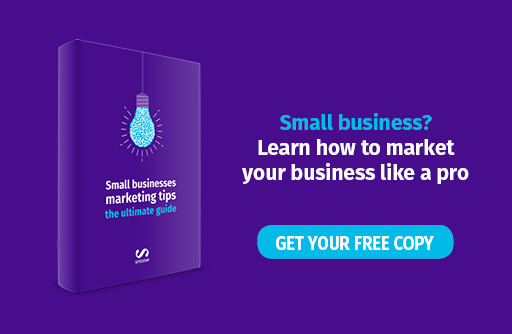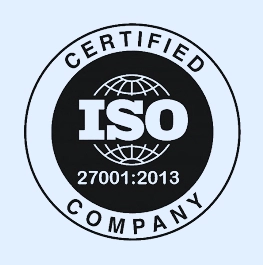In 2018 everyone and their dog knows that businesses need to be online if they want even the slightest chance of success. What some small businesses sometimes fret about, though, is – what form should this online presence take? It’s a solid question, because being online in 2018 isn’t as simple as it used to be, say ten years ago. There are many forms to choose from, and today we’re comparing two of them: websites and landing pages.
Below, we will discuss the purpose of each asset, how they’re created, how they’re typically used and how traffic is generated towards one, or the other. Read on below to find out which type you need and which would work best for you.
The purpose of each asset
The best way to describe your website is to look at it as your virtual business card. It is your online presentation that people can find by either searching for you on search engines, or typing in your address directly. It is filled with various information about your business such as your address, contact information, or working hours. It details the team (if you have it), the product or service you offer, and offers links to your blog, social media channels, testimonials, media mentions, those kinds of things. Also, a website can help a visitor get a general feeling about your business and it can help generate customer growth.
A landing page, on the other hand, has a different and very precisely targeted purpose – to gather contact information (usually, an email address), from people who visit it. The visiting part is also different – people can’t just stumble upon the landing page as they might with your website. You need to send them to the landing page, either by paid efforts (advertising) or by directly inviting your current contact database (your social media following, your newsletter subscribers, or your text message subscribers, for example). It also looks differently – it is devoid of all the information a website has, like contact information, the “about us” section, or blog.

Landing pages vs. websites – how each is created
The process of creating one or the other is also different. Building a solid website is quite the endeavor, both time-wise and money-wise. You’ll need to buy a domain name (that’s your site’s address, like www.mysmallbusiness.com), and a hosting (that’s the disc space on some server somewhere, where your website will be set up for the world to see), and depending on how good you want this to be, the price will vary.
Then, you’ll need a developer to actually build the website, organize the links between different pages, make sure everything works and that it’s in line with the rules of the internet (stuff like SEO optimization, mobile-friendliness, user experience, not to bore you too much with the tech stuff).
You’ll need a designer to make sure everything’s nice and tidy, easy on the eye and pretty enough to keep the level of interest high.
Creating a landing page is a much simpler endeavor, if nothing than for the fact that it doesn’t have all the sub-pages of a website like “about us” or “our services”. It doesn’t need a domain, because its goal isn’t do be found that way. Yet, if you do have your own domain, you can connect your landing page to it. For the same reason, it doesn’t have to be SEO optimized. All of these lead to the fact that you don’t need a developer, hosting or domain, or a designer to create a great landing page.
You can build one yourself using one of many great WYSIWYG tools (What You See Is What You Get) out there. By using templates and pre-defined design ideas that these tools are teeming with, you can get a landing page up and running in no time.
Typical uses of landing pages for small businesses
Earlier in the article we shortly touched on the question of the typical use of landing pages for small business, saying that its goal is to gather visitor information. With that in mind, landing pages can serve either a very short-term purpose, or one which is more of a long-term thing.
Here are a few examples of how a short-term landing page is utilized to gather user information:
– Customer discounts and benefits (Visitors leave their email address in order to receive a one-time, limited discount offer, or similar benefit)

Credit: Pagetuners.com
– Special event sign-up (Visitors leave their email address to be notified of a special, one-time event either online or in their vicinity)
A landing page with a long-term purpose could be something along these lines:
– Scheduling an appointment (Visitors leave their email address in order to schedule an appointment with the business owner. Offers like this one can remain active indefinitely)

Credit: GoDaddy.com

Image Credit: Rogan Chahine
– Newsletter sign-up (Visitors sign up for your business’ newsletter in order to receive the latest news and updates in their inbox. Also available indefinitely)
How traffic is typically generated to landing pages vs websites
As you see, landing pages are quite different from regular websites, with different purposes, use cases and ways of creation. The way these two elements generate traffic also differs, greatly. Websites, on one hand, generate traffic through SEO, or Search Engine Optimization. In a nutshell, it’s a process that makes sure search engines can read the website correctly, so that when people search for things online, the engine knows when’s the best time to present it as a result. It’s a long-term effort and a long-term investment that takes at least half a year to show results, and usually more. Also, SEO is not something you do once – it’s an ongoing practice.
Landing pages don’t work that way. They want specific people in specific moments. That’s why landing pages generate traffic through paid advertising and business communication. Businesses will share the link to the landing page in their newsletter, through social media, SMS, virtually any type of communication.
Summary
Even though both are great and have their place under the digital sun, websites and landing pages are vastly different universes. Unlike websites, landing pages have one purpose. They are also much simpler to set up and drive traffic differently. Landing pages are a great way to engage with your customers and grow your business.


